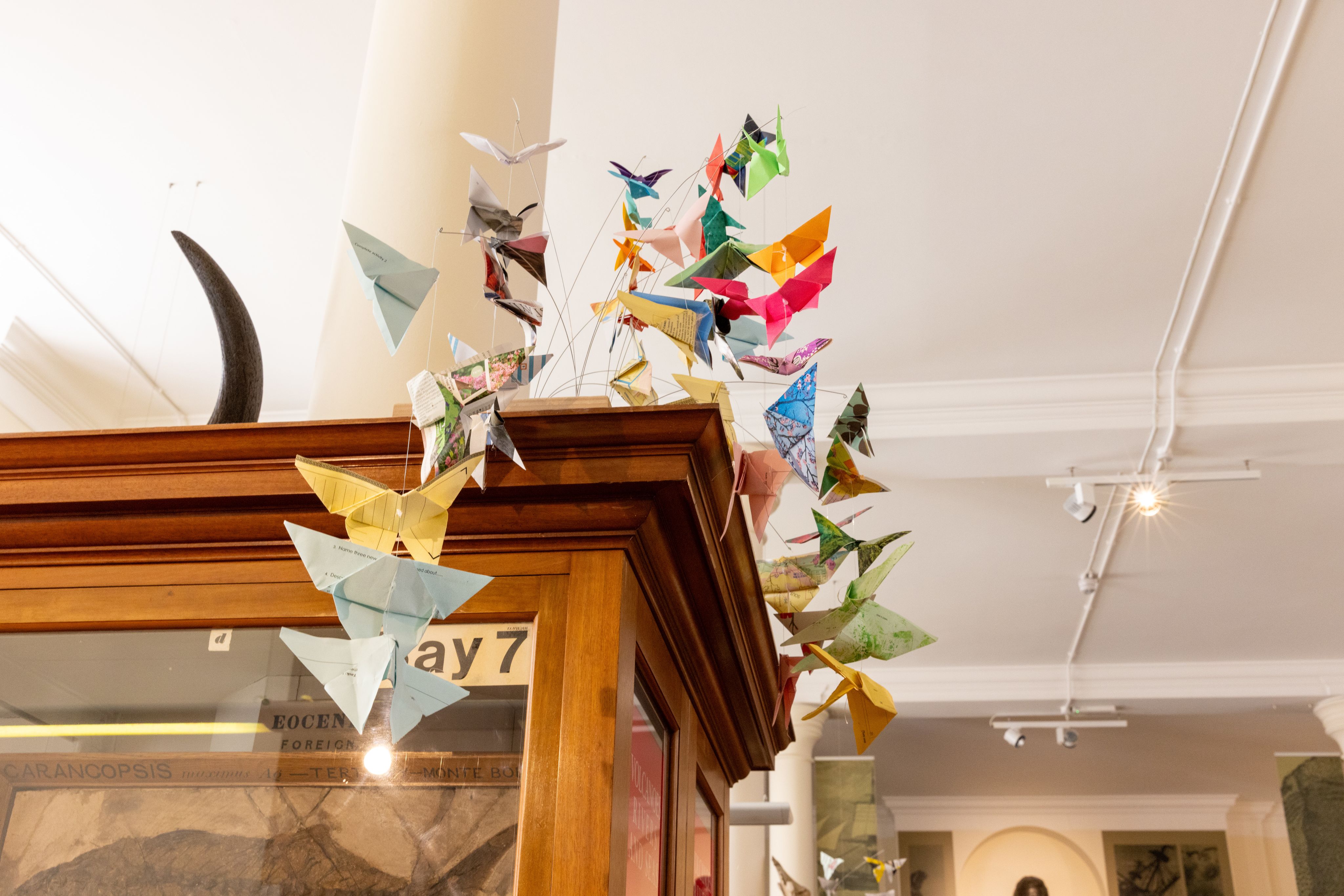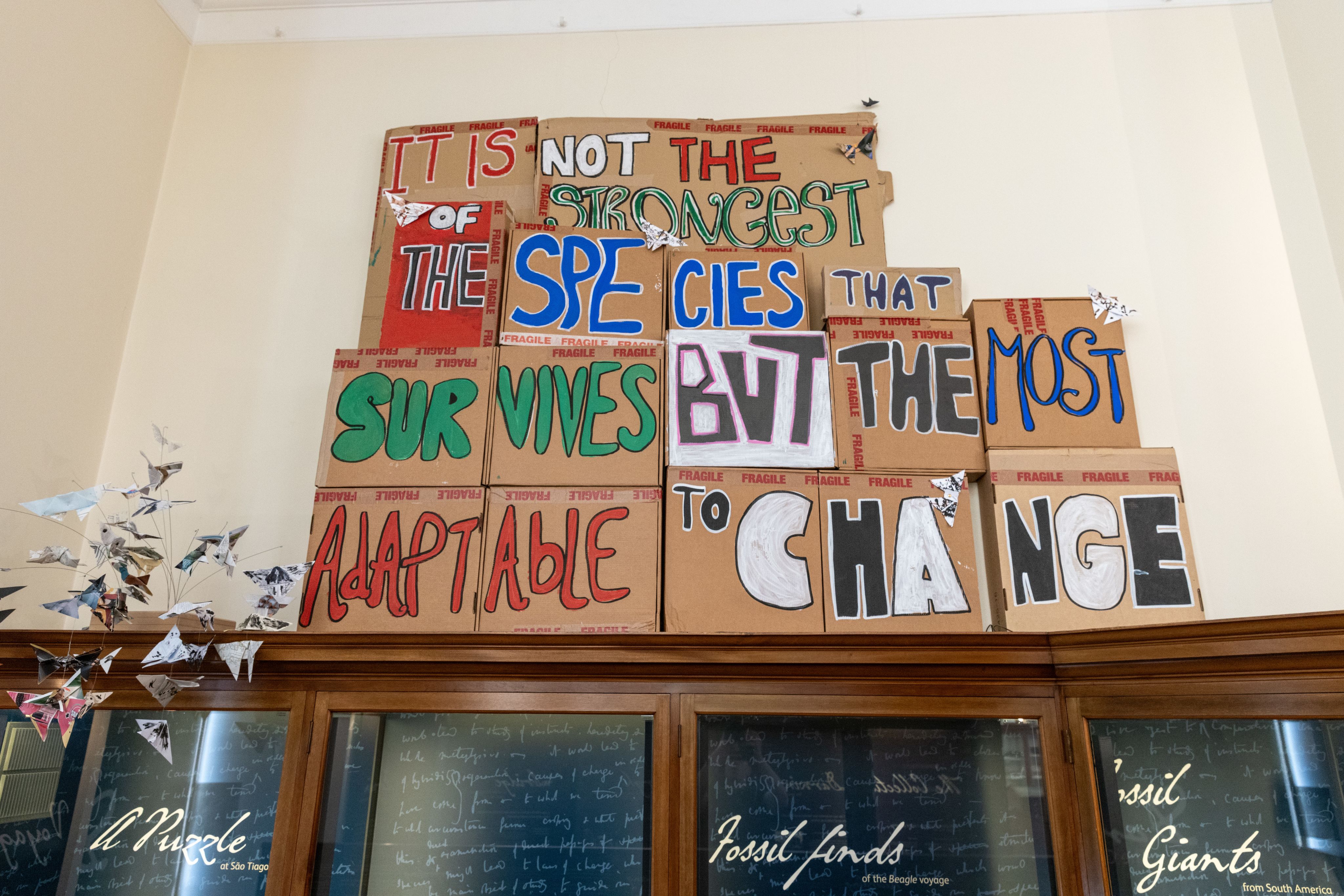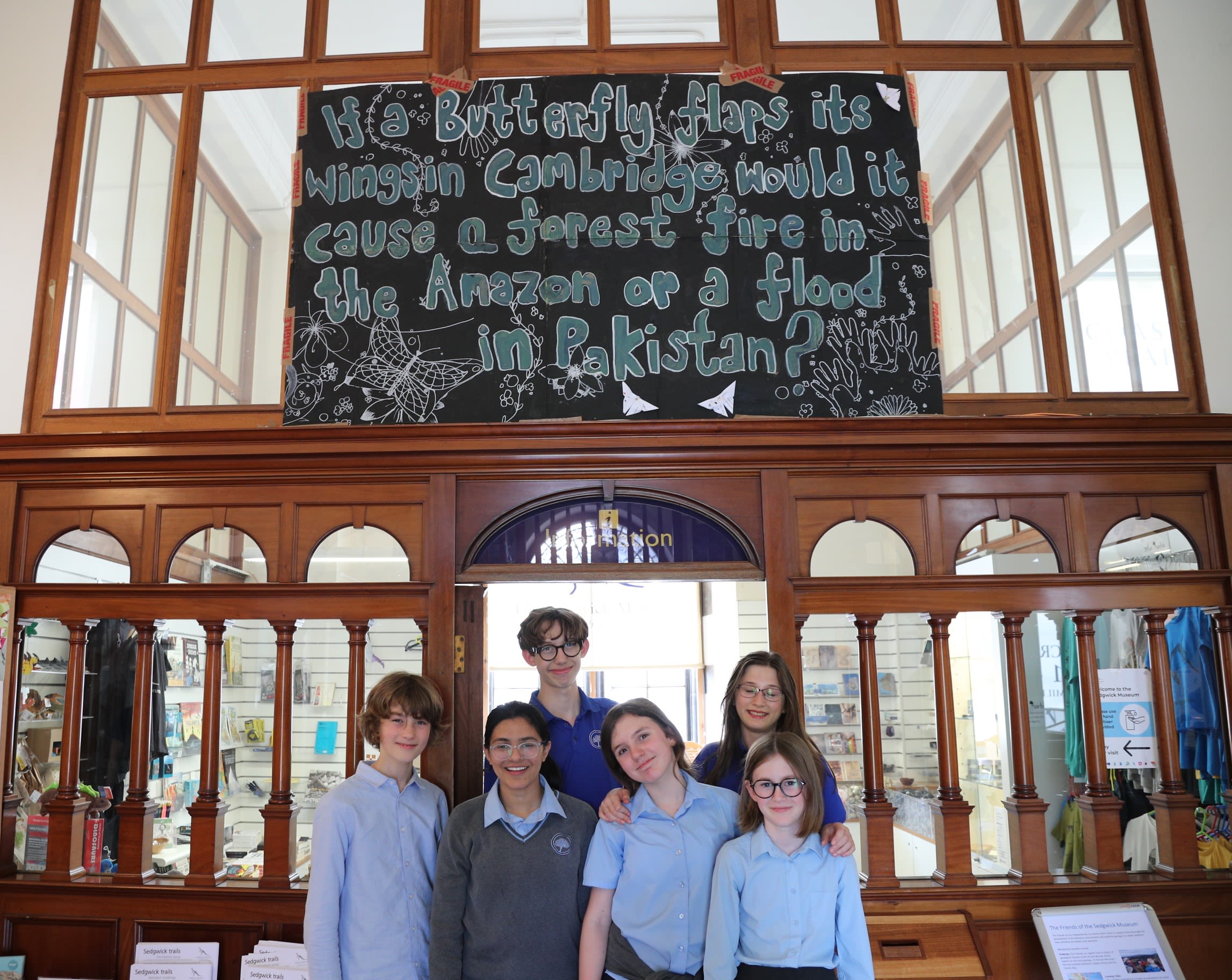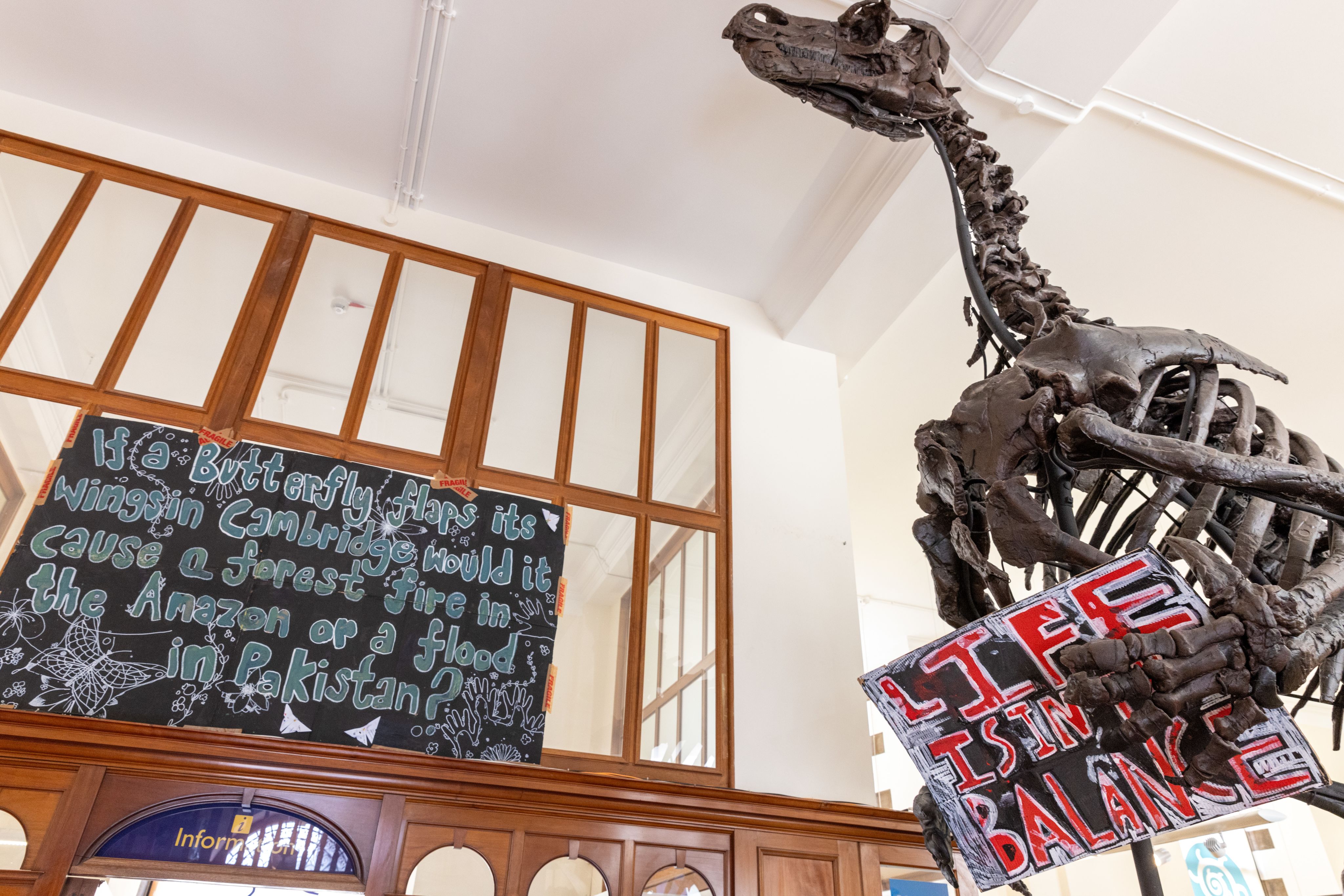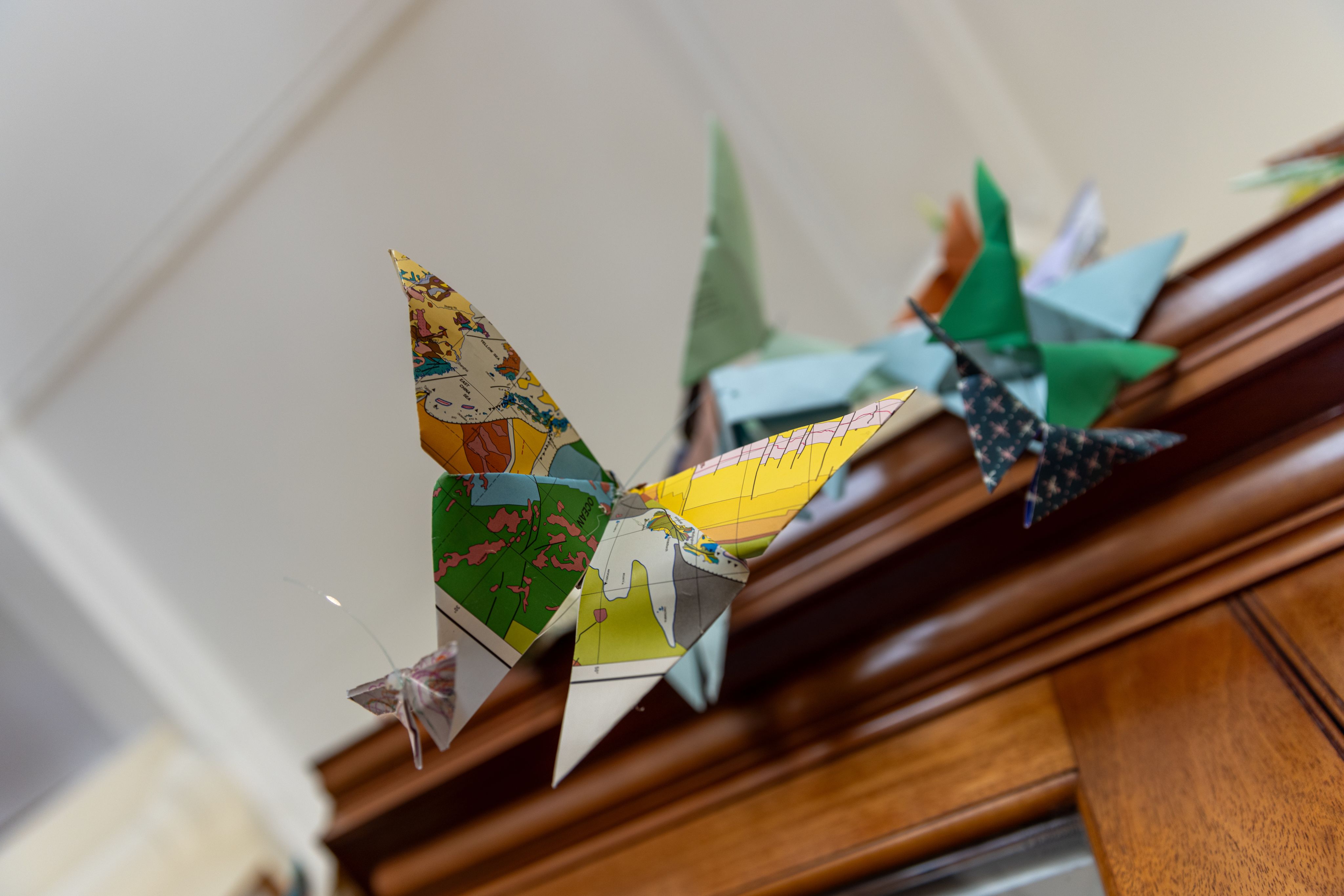The Butterfly Effect
New climate-themed art exhibition by local schoolchildren opens its wings at the Sedgwick Museum of Earth Sciences
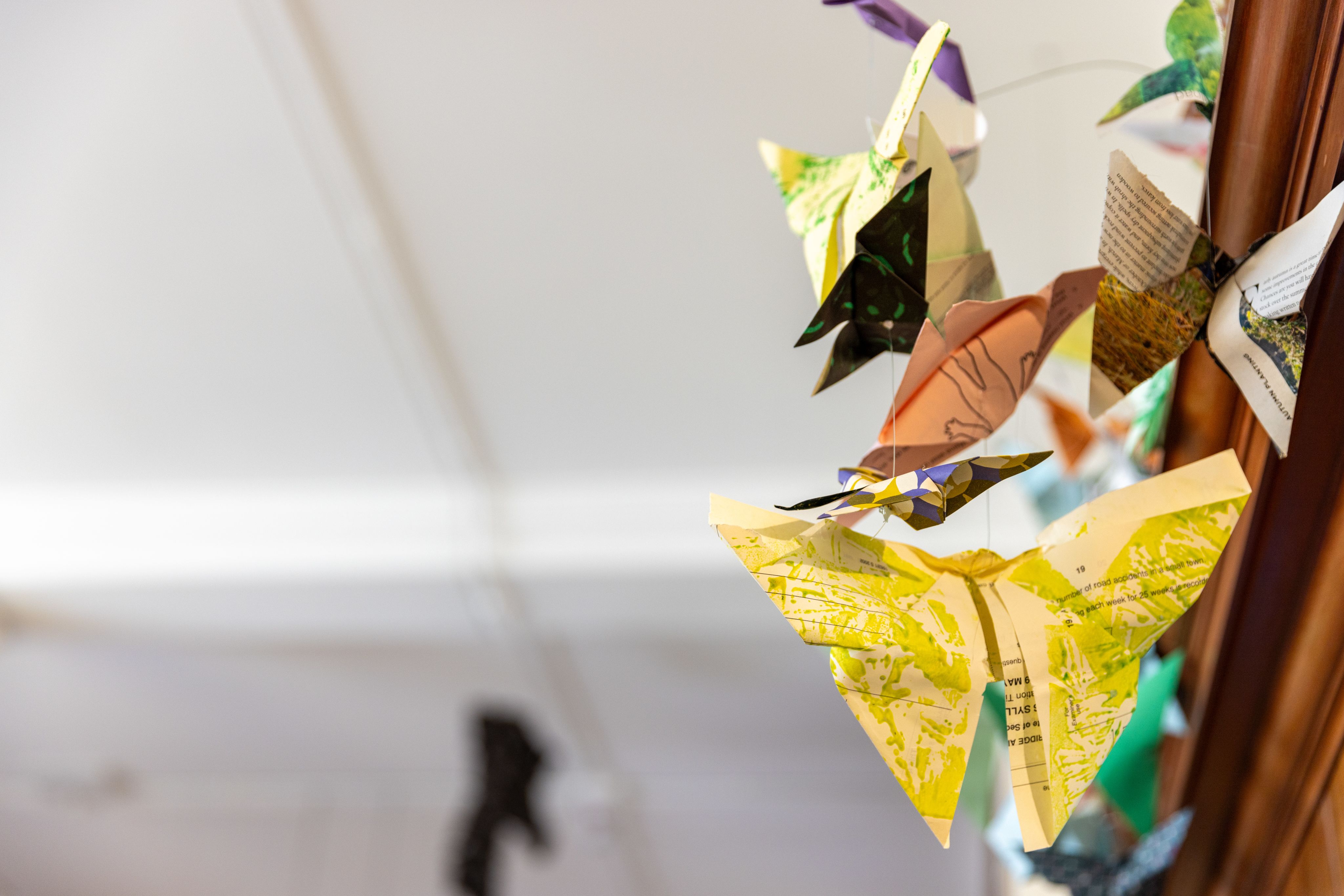
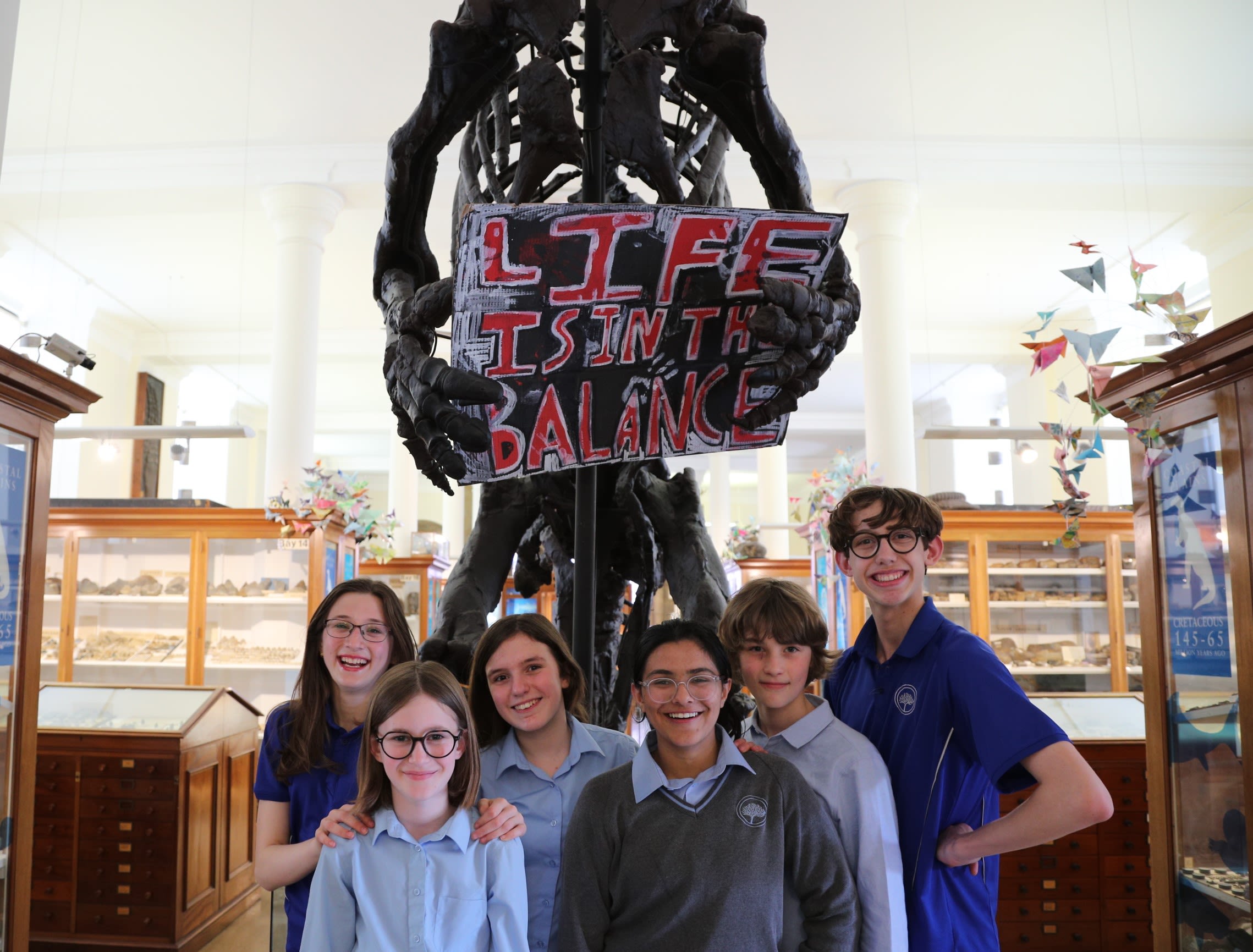
Students from Parkside Community College stand in front of an Iguanodon dinosaur skeleton which holds one of their hand painted signs as part of the exhibition.
Students from Parkside Community College stand in front of an Iguanodon dinosaur skeleton which holds one of their hand painted signs as part of the exhibition.
A new art installation intended to spark conversation and action about climate change has opened at the Sedgwick Museum of Earth Sciences, created and curated by local schoolchildren, ages 11 to 16, from Parkside Community College.
Titled ‘The Butterfly Effect’, the installation is a creative response to workshops the students attended with scientists from the University of Cambridge to learn about climate change and extinction events.
Inspired by learning butterflies act as an early warning sign to changes in the environment, the group collaborated with artist Hilary Cox Condron to create an exhibition featuring hundreds of handmade butterflies arranged throughout the museum, juxtaposed with hand painted warning signs.
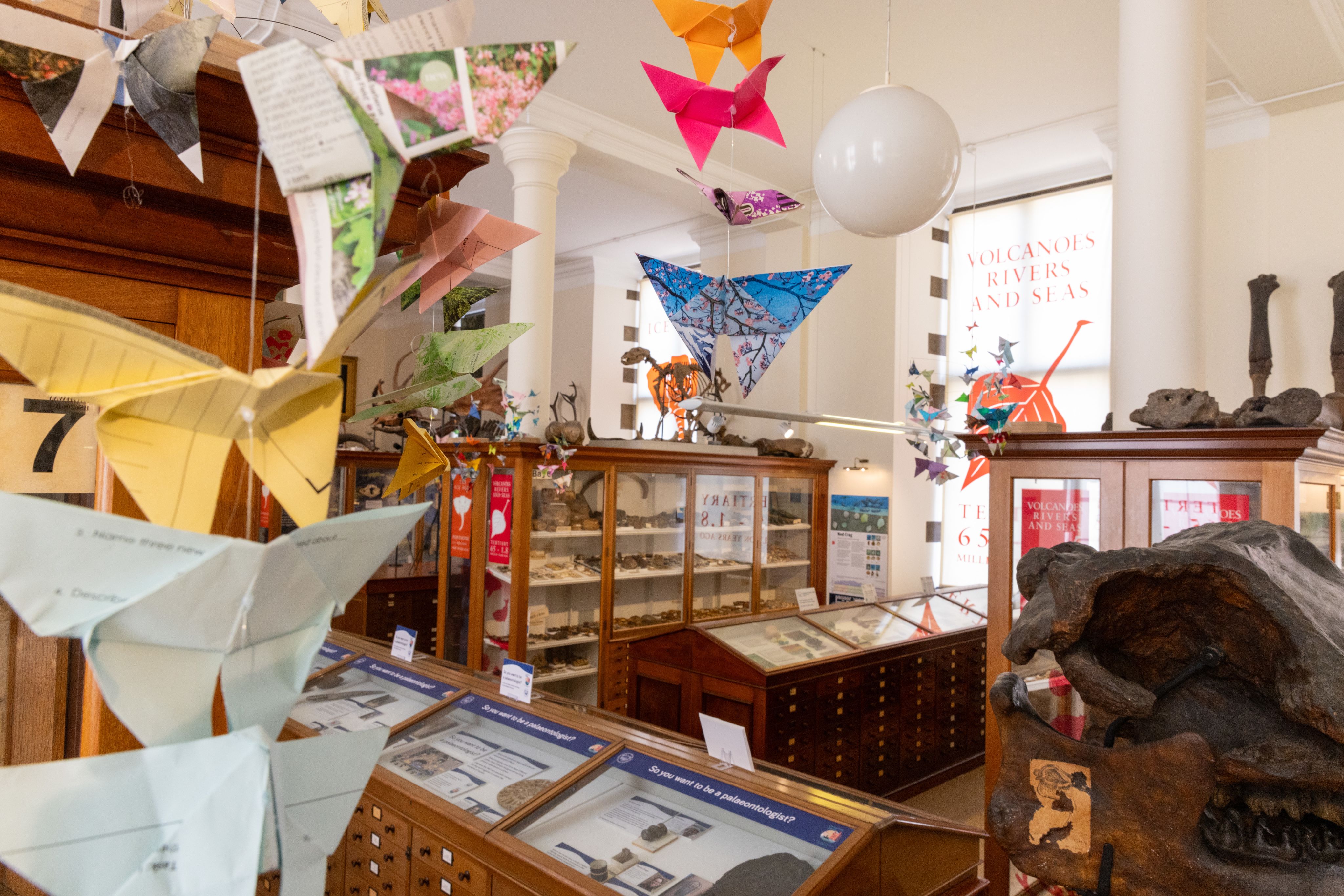
The kaleidoscope of butterflies, made from recycled paper from the school, research labs and museum are strategically positioned to mark the ‘Big Five’ extinction events.
The handmade cardboard protest banners, one held aloft by a 13-foot-tall Iguanodon dinosaur skeleton, reflects the voices of the young people. They are intended to alert and inspire museum visitors to the fact we are currently living through a sixth mass extinction event right now.
"Butterflies are our alarm bells. Don't press snooze, press stop"
‘The Butterfly Effect’ is the culmination of an engagement programme between the museum and school that began in November 2023. Students volunteered their free time after school each week to learn about different aspects of climate change, before channelling their new knowledge into a creative output.
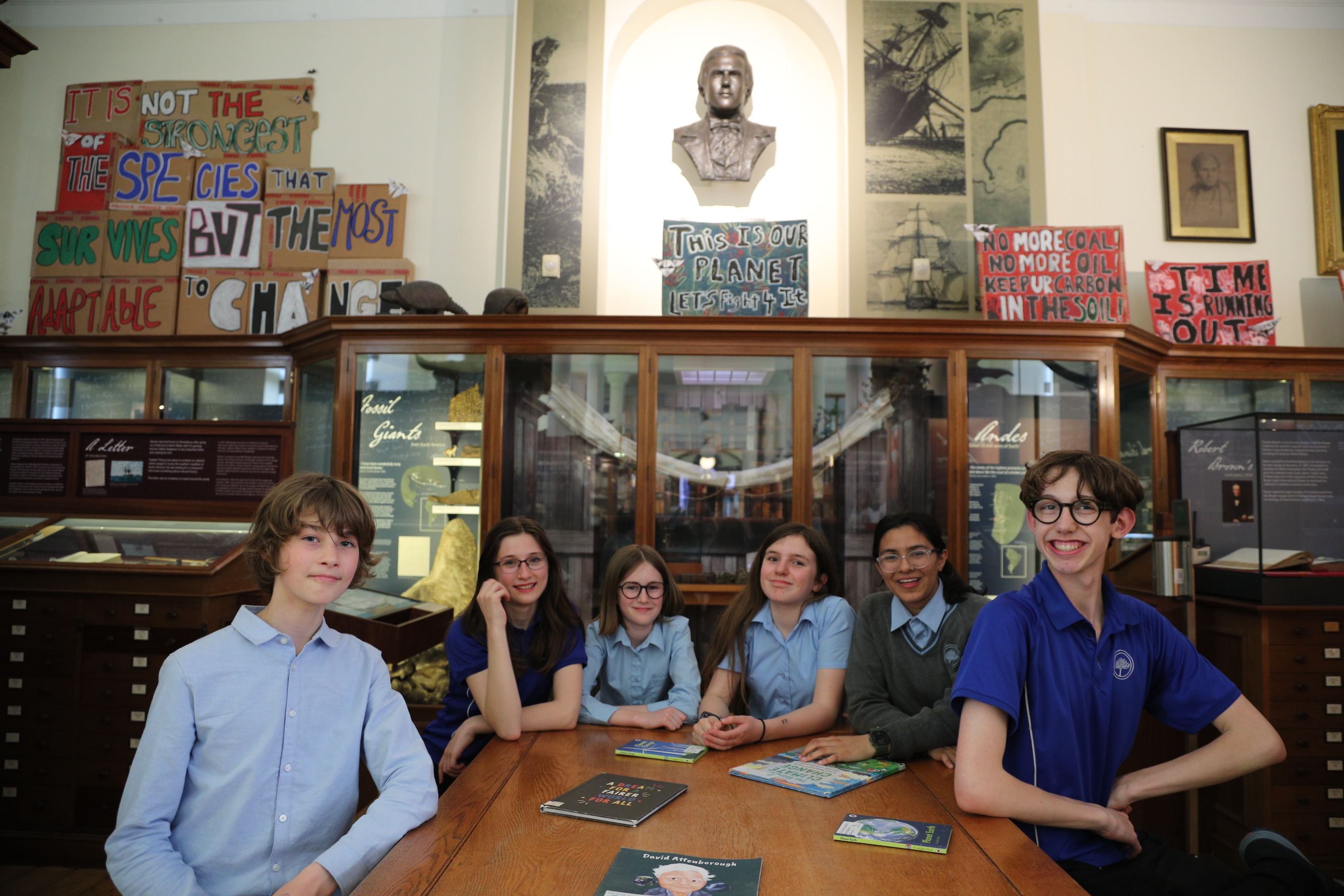
Workshops the students attended as part of the programme included:
- A history of collecting climate data and the importance of citizen science and recording. Led by Alison Giles, Learning Coordinator, Whipple Museum of the History of Science.
- Expanding our time frame to deep time, how fossil evidence can show changing climates. Led by Dr Sally Collins, Learning and Engagement Manager, Sedgwick Museum
- Workshop and Q&A with:
- Professor Eric Wolff, Senior Climate Change Scientist and Professor, Department of Earth Sciences
- Kate Oglethorpe, Physical Oceanography PHD student
- Daniel Heathcote, Oceanic Physics PHD student
- Print Sakulsupich, Chemistry PHD student
- Matthew Hayes, Zoology PHD student
- Rosie Amos, Learning and Public Engagement Coordinator, Scott Polar Research Institute - Reflections on learnings, with artist Hilary Cox Condron
- Two writing workshops, focused on how to write for a museum audience and how text for the museum is created edited. Led by Robert Theodore, Exhibitions and Displays Coordinator, Sedgwick Museum
- Numerous creative sessions with artist Hilary Cox Condon planning and making the installation.
“It’s been a real joy working with the students from Parkside and they’ve created some striking artistry for visitors to experience amongst our collection. The Sedgwick Museum has rocks and fossils that show over 1700 million years of global climate change and it’s vital young people engage with the climate crisis. This programme was created to connect the upcoming generation with our world-leading climate scientists and to give the students a space and voice within the Museum. It’s been wonderful to see them respond to it so enthusiastically and creatively.”
The exhibition is free to visit. It's open now until June 2025.
The Sedgwick Museum is open Monday to Friday 10am - 5pm and on Saturdays 10am - 4pm.
Plan your visit at: https://sedgwickmuseum.cam.ac.uk/
The text in this work is licensed under a Creative Commons Attribution 4.0 International License.

